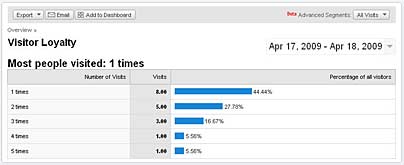Google recently launched the Website Optimizer, a tool that can help you improve the effectiveness of your website by allowing you to test different versions of your site content to determine what will best attract users.
Website Optimizer uses two types of testing: A/B testing and multivariate testing.
An A/B experiment allows you to test the performance of two (or more!) entirely different versions of a page. You can change the content of a page, alter the look and feel, or move around the layout of your alternate pages; there’s plenty of design freedom with A/B testing.
Multivariate tests, on the other hand, allow you to test multiple variables — in this case, sections of a page — simultaneously. For example, you could identify the headline, image, and promo text as parts of your page you’d like to improve, and try out three different versions of each one.
A/B experiments are the simpler version of testing with Website Optimizer. Experiments can run on many webpages of a website.
Website Optimizer needs a Google Analytics Account, because it uses the same powerful tracking technology that is used in Google Analytics to collect experiment data. The performance of experiment pages won’t be impacted, with the possible exception of the very first page-load after you have added the tracking code.
A quick start guide is available at the Google site. Different test strategies are possible (time on page, conversions, clicking rates, landing pages, …).
Website Optimizer scripts will fail W3C validation because they meet browser requirements which do not strictly adhere to the W3C guidelines. There is no workaround available for these errors.


